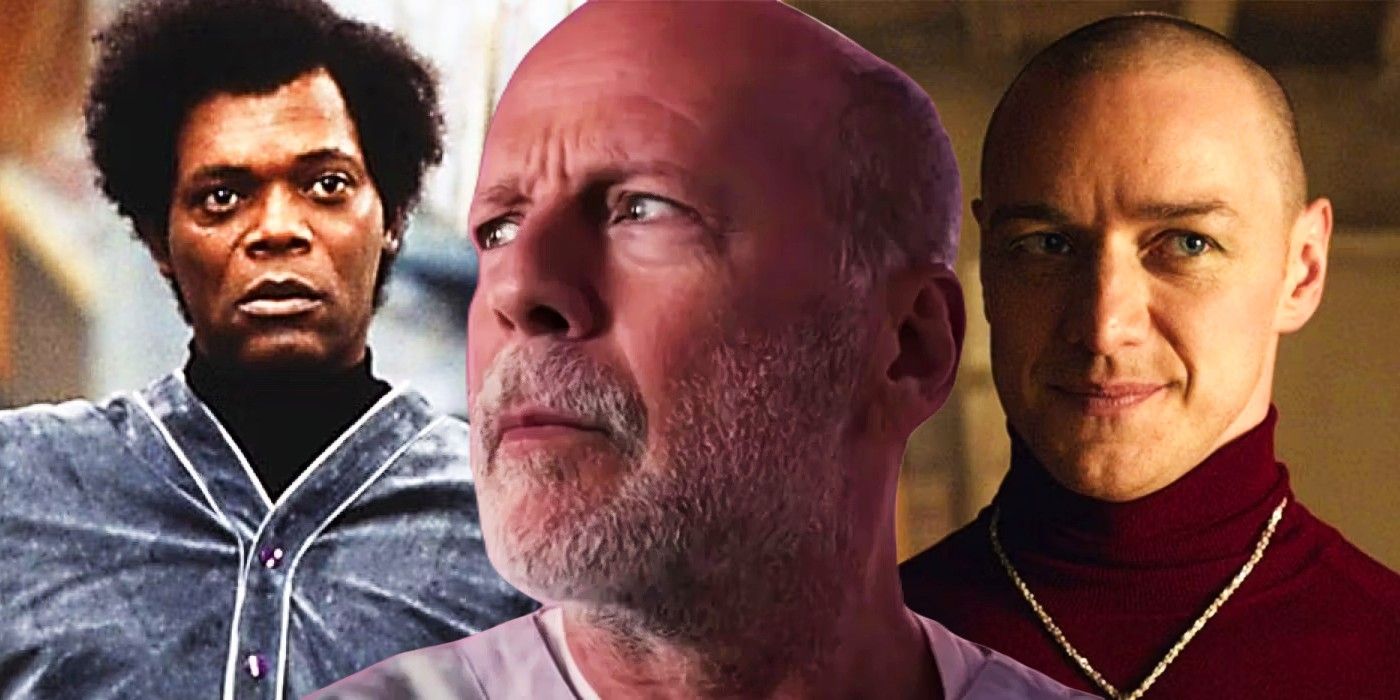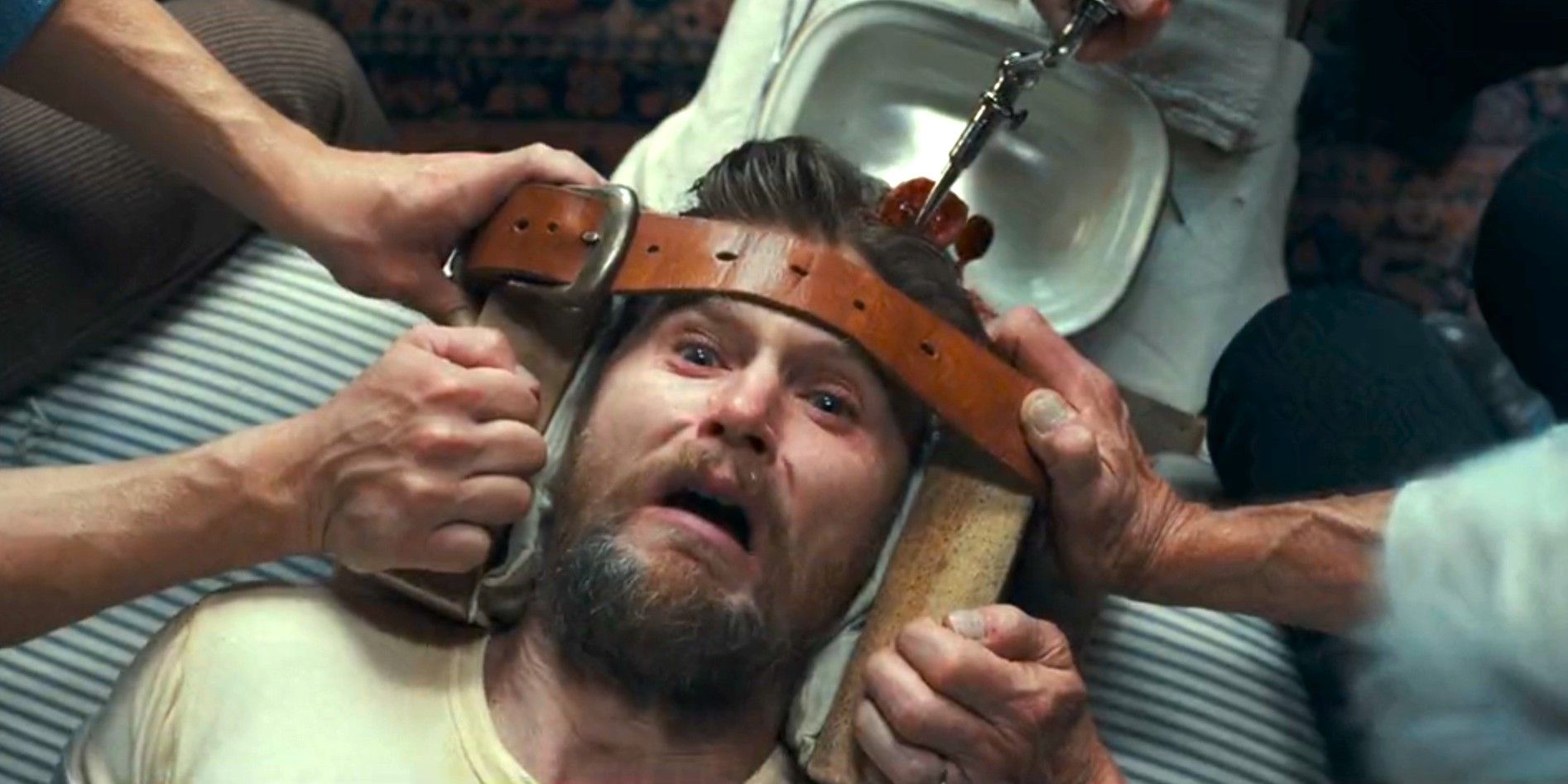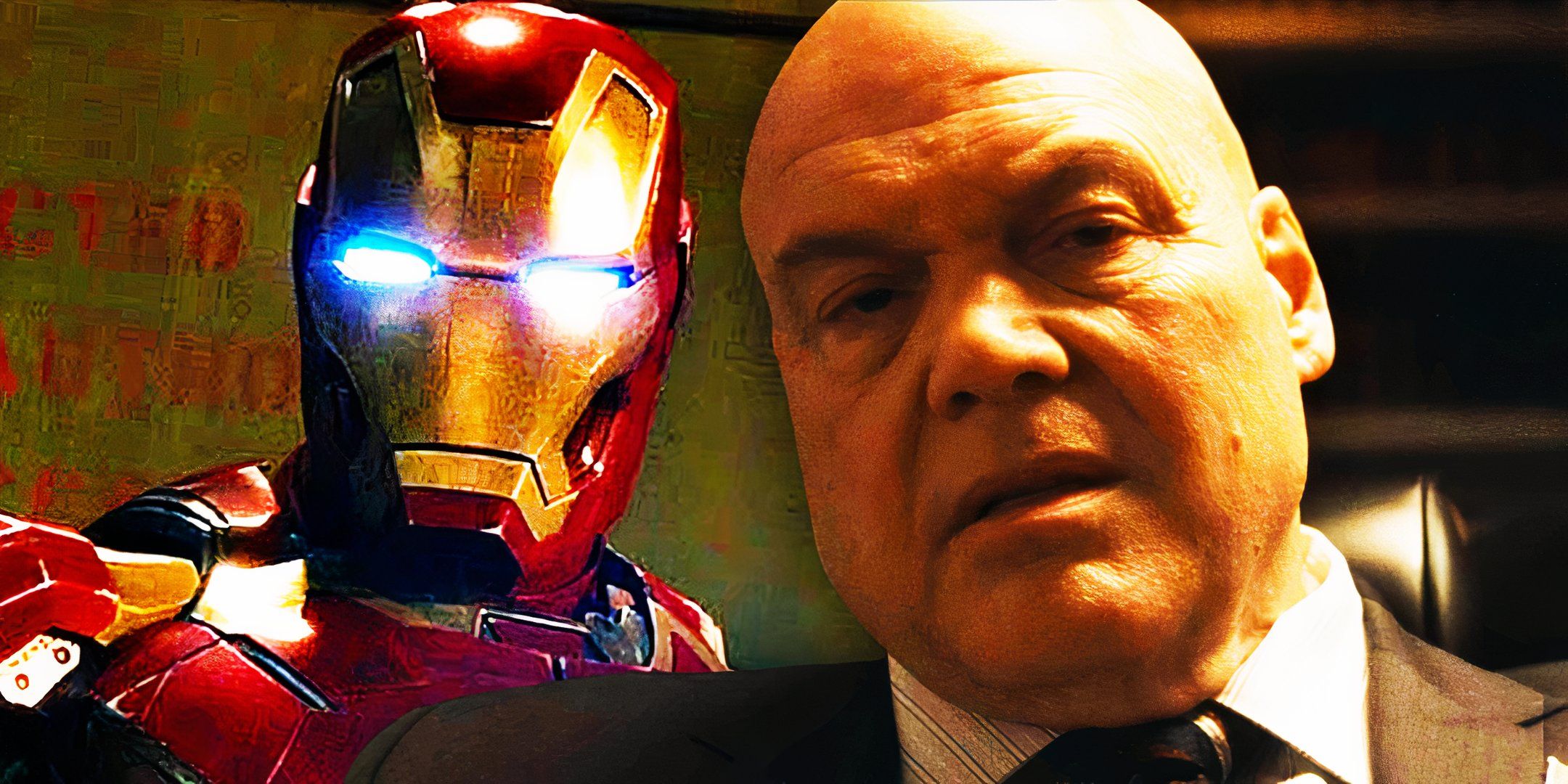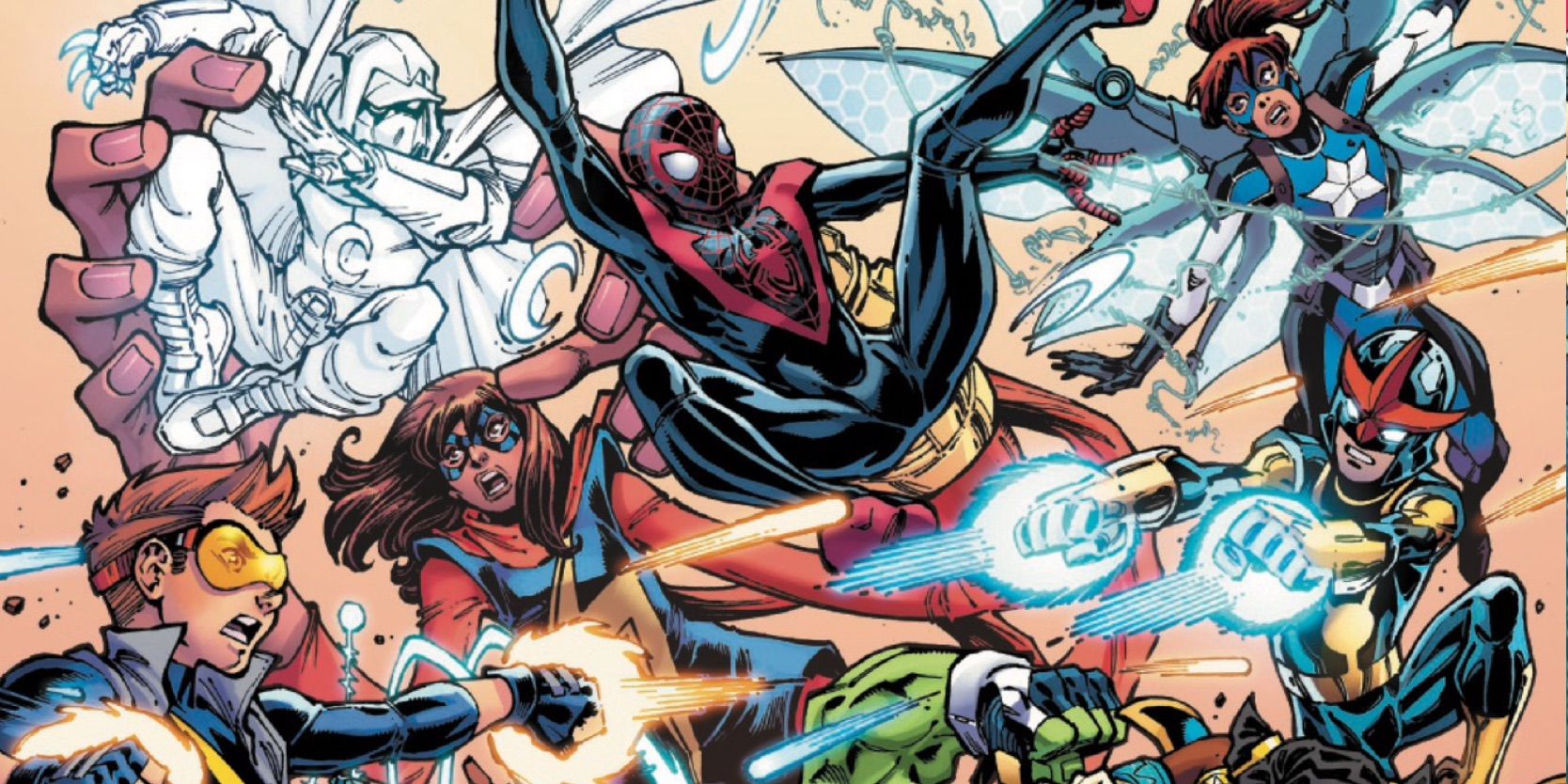Do You Need To See Split & Unbreakable To Understand Glass?
Summary Glass combines characters from Unbreakable and Split in a showdown showcasing their unique superhuman traits in a psychiatric facility setting.
While Glass can be enjoyed as a standalone film, watching Unbreakable and Split enriches the narrative with important context and character connections.
M. Night Shyamalan's trilogy concludes with Glass, integrating visual elements, flashbacks, and character arcs to create a complex and satisfying finale.
M. Night Shyamalan's Glass unfolds within the same universe as his earlier films Unbreakable and Split. The director first delved into the realm of comic book superheroes with Unbreakable in 2000. The movie introduced audiences to David Dunn, portrayed by Bruce Willis, a security guard who discovers his superhuman strength and a unique extrasensory perception that reveals the sinister actions of those he touches. Samuel L. Jackson stars as the scheming Elijah Price, a character whose fragile bones contrast starkly with Dunn’s abilities, propelling him on a path of self-discovery.
Despite Unbreakable's moderate box office success, it fell short of securing an immediate trilogy, which was Shyamalan's initial aspiration. However, the narrative continued with the "secret sequel" Split in 2017, initially presented as an unrelated thriller. The second movie in the Unbreakable trilogy centers on the abduction of three teenagers, including the reticent Casey Cooke, by Kevin Wendell Crumb (James McAvoy), who suffers from dissociative identity disorder. The final moments of Split included a twist, revealing that it's set within the Unbreakable universe. While watching Unbreakable and Split makes Glass easier to follow, it's also not 100% necessary.
Glass is available to stream on Netflix.
Related Glass Movie Ending & All Twists Explained Glass is as twisty as you'd expect from M. Night Shyamalan. We break down the ending and all the surprises in the belated Unbreakable sequel.
Audiences Don't Need To Have Seen Unbreakable & Split Before Glass (But It Helps)
Glass Functions As Both A Standalone Movie & The Conclusion To A Trilogy
Close
Viewers can appreciate Split without prior knowledge of Unbreakable, though the final scene in Split ties back to the first movie. This connection extends to Glass, Shyamalan's latest entry in this superhero trilogy. While it is possible to follow Glass without seeing the preceding films, doing so omits crucial background and context that enrich the narrative.
Glass is designed to function as both a standalone feature and the culmination of a trilogy. Shyamalan integrates key elements from Unbreakable and Split, such as flashbacks to Elijah's history, references to the pivotal train crash in David's life, and explanations of Kevin's multiple personalities. Dr. Ellie Staple (Sarah Paulson) - a psychiatrist who specializes in treating people who believe they are real-life superheroes or supervillains — provides essential exposition, outlining the histories of the three protagonists, thereby bridging gaps for new viewers.
Those who haven't seen Split will probably be confused by the one-off lines about Casey's past, and may have a hard time understanding why she feels so strongly connected to Kevin in the first place.
Nevertheless, those who haven't watched Unbreakable and Split will miss a lot of the smaller, but significant implications in Glass, ranging from the trademark cameo by Shyamalan himself (reprising his role from the previous two films) to the flashbacks and references to David's son, Joseph, as a child and his wife Audrey. Most importantly, those who haven't seen Split will probably be confused by the one-off lines about Casey's past, and may have a hard time understanding why she feels so strongly connected to Kevin in the first place.
Although missing these details does not prevent understanding the plot of Glass, it may result in a less impactful emotional experience, as the film's allusions to its predecessors resonate more with those who have the complete backstory. Nonetheless, viewers opting to watch Glass without prior exposure to the series can still enjoy and understand the film's main storyline.
Bruce Willis is the only main actor to feature in all three movies in the Unbreakable trilogy.
Related Kevin Wendell Crumb's Origin & Backstory In Split Explained Kevin Wendell Crumb steadily develops into the most dangerous threat of Split and Glass, but has a notably tragic backstory and origin.
How Glass Brings Unbreakable & Split Together
The Final Movie Is An Epic Battle Between The Trilogy's Main Characters
The central thread of Glass is the convergence of the three main characters — David Dunn from Unbreakable, Elijah Price (also known as Mr. Glass) from Unbreakable, and Kevin Wendell Crumb from Split. Each character brings forward a distinctly developed superhuman trait. David possesses invulnerability and psychic impressions through touch, Elijah displays a brilliant but villainous mind paired with his brittle bone disease, and Kevin manifests multiple personalities, each with distinct characteristics, one of which, "The Beast," possesses superhuman abilities.
Shyamalan integrates these characters by placing them in a psychiatric facility where they are studied by Dr. Ellie Staple, who specializes in individuals who believe they are superheroes or villains. This setting not only forces the characters to confront each other but also to reflect on their identities and the reality of their abilities, a central theme across all three films. The facility acts as a crucible where the truths of Unbreakable and Split are tested and ultimately fused into a new narrative.
As the characters interact, their stories interlock: David seeks justice, Elijah orchestrates chaos to reveal the existence of superheroes to the world, and Kevin struggles with his identities while grappling with his traumatic past.
Visually, Glass recalls elements from both previous films through its color palette — green for David, purple for Samuel L. Jackson's Elijah, and yellow for Kevin — enhancing their individual and collective narratives. The film also features flashbacks and archival footage from Unbreakable, such as the train crash that catalyzed David’s transformation and scenes showcasing Elijah's complex relationship with his mother, which deepen the historical context shared with the audience.
The plot of Glass hinges on the trio's escape attempts and the unfolding revelation of their realities. As the characters interact, their stories interlock: David seeks justice, Elijah orchestrates chaos to reveal the existence of superheroes to the world, and Kevin struggles with his identities while grappling with his traumatic past. Glass not only merges the disparate elements of Unbreakable and Split but also enhances them, creating a complex tapestry that concludes the trilogy.











COMMENTS